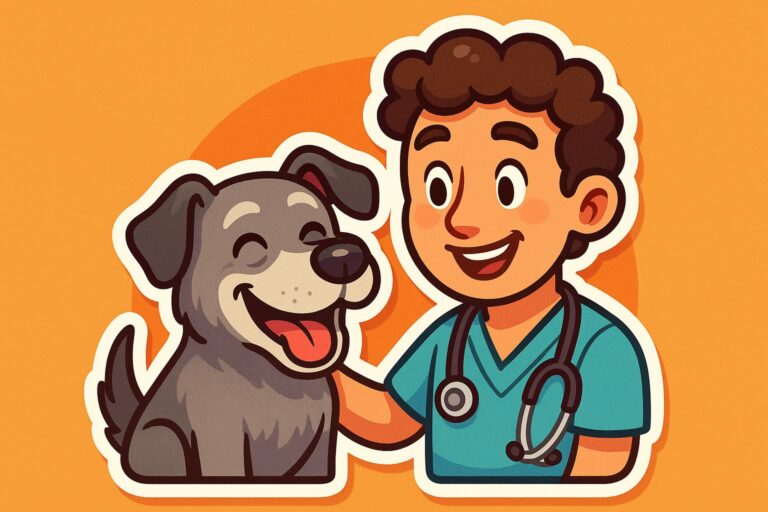When Your Senior Dog Is Too Old for Surgery it is time for Pain Management Options

As dogs age, many of them experience pain. Their joints no longer work as they used to, digestive issues arise, or inoperable tumors may be weighing your four-legged friend down. If surgery is no longer an option to provide relief, you need to help in other ways. Pain management therapy might be your solution.
Pain therapy provides symptomatic treatment for your dog. The underlying cause of the pain may remain, but the pain itself is alleviated. Especially in senior dogs where anesthesia carries increased risks, this can be the best option.
Here, you’ll learn what you need to know about pain management therapy, how to recognize pain in your dog, what goals pain therapy pursues, and what to do if it doesn’t bring the results you were hoping for.
What Is Pain Management Therapy?
“Pain management therapy” is a general term for all treatments aimed at combating pain. Pain therapy can consist of
- Pain medications,
- Massages,
- Physical therapy,
- Cold or heat treatments, and
- Alternative methods (such as acupuncture)
Which options will be most effective in your situation is something your vet will know best. It’s entirely possible—and often beneficial—to combine several therapies.
As advanced as our treatment of pain has become, pain management can’t always guarantee complete success. In some cases, your dog may have to live with a low level of discomfort.
That doesn’t mean your dog no longer has a good quality of life. It’s always the overall picture that matters.
How Old Is Your Dog In Human Years? Find Out in Seconds!
Enter your dog's age and instantly see what that means in human years.
Why Pain Management Can Help in Old Age
Aches and pains are an inevitable part of aging. According to an article on the Veterinary Association’s website, up to 90% of all large dogs develop osteoarthritis later in life. This degenerative joint condition is just one cause of pain in senior dogs.
Many pain triggers can still be treated even in old age. When that’s no longer possible, a different approach is needed. Thankfully, the days when our pets simply had to endure pain are over. Not long ago, people believed that pain encouraged animals to rest, even after surgery, so pain medication was sometimes withheld.
Today, we know better. Our pets feel pain nearly identically to us. Whenever possible, we avoid putting them through it.
There are other reasons to consider pain management therapy for aging dogs. Untreated pain can
- lower quality of life,
- promote secondary problems such as obesity and muscle atrophy, and
- lead to stress—which in itself can cause illness.
How strongly your dog reacts to pain also depends on their breed. This was shown in a study by Margaret E. Gruen, Philip White, and Brian Hare. According to these researchers, Maltese are particularly sensitive to pain, while Huskies—often (wrongly) dismissed as softies—actually display an average pain tolerance.
How to Recognize Pain in Your Dog
To know if your senior needs pain relief, you have to recognize how dogs behave when they’re in pain. Depending on the cause and type, pain can manifest in a variety of ways.
Lameness is a telltale sign of pain. If your dog is limping, they may have pain in their paw, leg, or back.
An unusually stiff gait can point to abdominal or back pain. With abdominal pain, the belly will also feel tense.
If your dog has tooth pain, you may notice bleeding gums, refusal to eat, or whining and yelping when trying to eat.
General signs of pain in dogs include:
- Lip licking
- Avoiding certain movements (such as climbing stairs or arching the back)
- Sensitivity to touch (sometimes with aggressive behavior)
- Vocalizing pain (whining, yelping, whimpering)
- Trembling
- Excessive licking/chewing of specific body areas (sometimes leading to hair loss)
- Panting with a tense (curled) tongue
- Pain face (squinting or wide-open eyes, furrowed brow, ears pinned back, “smiling” expression)
Remember, these signs aren’t always pain-related. For example, short-nosed breeds often pant with a slightly curled tongue by default. But if you notice several of these signs, especially combined with refusal to eat or symptoms of illness, it’s time to take action.
📓 Pain Diary
You might have heard of keeping a pain diary. It’s a tool for spotting pain triggers and tracking what helps your dog when they’re hurting. A pain diary makes the most sense when your dog has already been diagnosed with a specific pain issue.
If you’re still searching for the cause, though, a diary can also help with diagnosis.
In a pain diary, you record when your dog experiences pain and how severe it is. You’ll also note what measures you’ve taken to relieve the pain and whether those interventions helped.
If you notice anything else that might be important, jot it down there too.
🎯 Goals of Pain Management Therapy
Pain management therapy has several objectives. In the subsections below, I’ll go into more detail about its benefits.
#1: Relieve Pain
Of course, the primary goal of pain therapy is to take away your dog’s pain. It’s only through this that the other aims can be achieved—when your dog is finally pain-free.
Pain is a natural defense mechanism. It lets us know when our bodies are overtaxed, and keeps us from making foolish choices. But it isn’t necessary: that’s what you’re there for—to look out for your dog. Instead of forcing them to suffer pain in order to rest, you simply keep them on-leash.
Sure, that’s more work for you. But you’ll have a pain-free pup, which is worth it!
#2: Preserve Muscle Mass
As people and dogs get older, they lose muscle mass—a process that’s notoriously hard to reverse. Muscles are essential for mobility and provide important support functions.
A well-adjusted pain therapy plan encourages your senior dog to stay active, helping them keep their muscles in shape.
#3: Improve Quality of Life
Pain undoubtedly reduces quality of life. Dogs still want to move, even in their golden years. If they can’t, they miss out on joy.
Just imagine not being able to do your favorite hobby anymore—and being in pain on top of that. You’d be pretty miserable, too. For dogs, it’s even harder because they can’t understand why they feel this way. Well-managed pain medication ensures your dog keeps their zest for life.
This doesn’t mean your senior will start leaping around like a puppy again. But pain-free walks should still be possible, no matter their age.
#4: Prevent the Formation of Pain Memory
Pain memory is the phenomenon where the body “remembers” pain, continuing to send pain signals to the brain even after the original cause is gone.
This occurs with chronic or recurring pain, which can become firmly entrenched and persist even after the source has been eliminated—creating a pain memory.
The nasty thing about pain memory is that it reduces the effectiveness of pain medication. Dogs with pain memory often take longer to respond to therapy and may require higher doses to get relief.
❓ What to Do If There’s No Improvement
Your senior dog is on pain therapy, but the pain doesn’t seem to budge? Here’s what you should do in these situations:
#1: Wait It Out
Pain medications sometimes take a little while to kick in. I know it’s hard to be patient, but keep a close eye on your dog. If you feel that nothing is improving or that your dog is even getting worse, speak to your vet.
Typically, painkillers take just a few days or at most a week to show signs of improvement. However, if your dog has already developed pain memory, it could take longer.
Waiting up to four weeks for medication to take full effect isn’t unusual in these cases.
#2: Adjust the Dosage
Pain medications are dosed according to weight, but individual needs can vary. Your vet will generally start with a slightly lower dose and increase it if necessary.
Very important: only your vet should adjust the dosage—not you. In a worst-case scenario, you could harm your furry friend. Never change medication on your own; always check with your vet first.
#3: Switch Medications
Just as dosage can vary from dog to dog, some medications may not work as well for yours as they do for others. In this case, it might be necessary to try a different pain reliever. With a new medication, improvement may be just around the corner.
You can find an overview of available veterinary pain medications on the website of the German Federal Veterinary Chamber. The link will take you to the „Guidelines“ section. To download the pain medication overview, scroll down to „Small/Companion Animals.“
#4: Avoid Pain Triggers
With severe pain, medication may not be enough to make your dog completely pain-free. In stressful situations, certain areas might hurt despite treatment.
It’s important to avoid those specific pain triggers. For senior dogs, such triggers often include:
- Sudden starting and stopping,
- Climbing stairs,
- Twisting the body,
- Jumping (during play, into the car, etc.)
- With organ problems: certain foods or large meals, and
- Extremely high or low temperatures.
Conclusion
If surgery is no longer feasible due to your dog’s age, pain management therapy is your best bet. It restores your dog’s quality of life, helps maintain mobility, and can prevent secondary diseases. That said, whether pain therapy is right for your dog always depends on the individual case.
In my opinion, you don’t need to worry too much about long-term effects on your senior’s organs. If your dog is already very old, it’s more important for them to live free of pain. The fact that these medications can burden the liver over time feels secondary to me in these situations.
Frequently Asked Questions
How does an old dog behave when in pain?
An older dog in pain will lose interest in movement, move more slowly in general, and won’t enjoy playing anymore. At night, they might seek out new sleeping spots more often, preferring especially warm or cool places over their usual resting areas.
How long can I give my dog pain medication?
With chronic pain, lifelong treatment is sometimes necessary, accompanied by bloodwork every six months. Your vet will use these regular blood tests to catch any medication-induced organ problems early—this doesn’t make pain management any less essential.
Which painkillers are suitable for older dogs?
The choice of pain medication depends on the underlying cause and the intensity of the pain. Opioids are used for severe pain, while non-steroidal anti-inflammatory drugs (NSAIDs) are commonly prescribed for conditions like osteoarthritis and dental pain.






